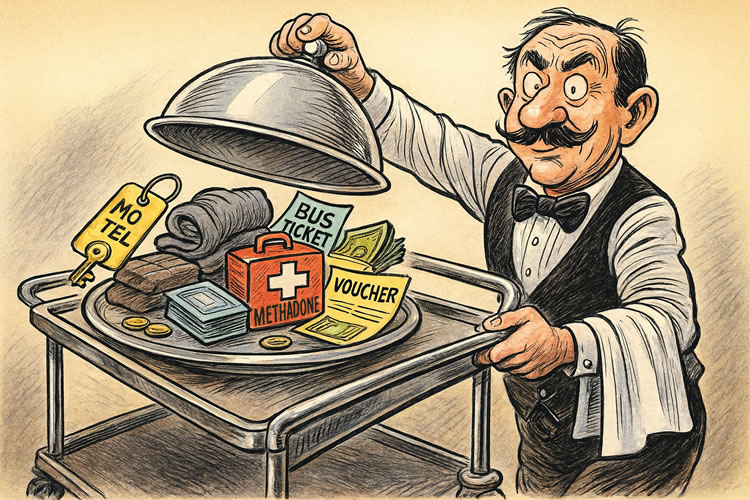Despite years of government promises, nonprofit campaigns, and headline-making prosecutions, human trafficking is still a widespread, underreported crime affecting every corner of the United States. It’s not confined to foreign borders or shadowy overseas operations. It happens here—on American soil, in American businesses, across all 50 states, Washington D.C., tribal lands, and U.S. territories.
The numbers are staggering. Globally, an estimated 27.6 million people are trafficked for labor or sex, according to the International Labour Organization. Yet the U.S. government still has no reliable estimate of how many trafficking victims exist inside the country. Despite this gap, Homeland Security Investigations (HSI) and the Department of Justice have confirmed trafficking operations in a broad range of industries: agriculture, construction, hospitality, elder care, restaurants, factories, and domestic work. Sex trafficking has been uncovered in hotels, apartment complexes, illicit massage parlors, escort services, truck stops, and even suburban homes.
“Victims have been identified in all 50 states and D.C.,” reads a Homeland Security intelligence summary. “Many traffickers and victims are U.S. citizens.”
More Than Just Smuggling
It’s important to understand what trafficking is—and what it isn’t. Human trafficking is not the same as human smuggling. Smuggling involves illegal transportation across borders. Trafficking, by contrast, involves force, fraud, or coercion to compel someone into labor or sex. A victim may never cross a border. In fact, they may never leave their own neighborhood.
In cases involving children, the definition tightens even more. Any commercial sex act involving a minor is trafficking, regardless of whether force or fraud was used.
Federal criminal statutes like 18 U.S.C. § 1589 (Forced Labor) and § 1591 (Sex Trafficking of Children or by Force, Fraud or Coercion) form the backbone of trafficking prosecutions. But victims are often charged themselves—wrongfully arrested, deported, or denied services due to misunderstandings about their exploitation.
Who Are the Traffickers?
There is no single profile. Traffickers can be part of transnational cartels, organized gangs, or freelance predators operating under the radar. Some are relatives, romantic partners, or employers. Others run businesses that look legitimate on paper—nail salons, janitorial firms, farms, or seafood processing plants.
Their motives are consistent: profit at the expense of another human being. Methods vary widely but typically involve combinations of:
- Force: physical abuse, threats, sexual violence
- Fraud: false promises of employment, love, security, or opportunity
- Coercion: withholding documents, threatening deportation, creating fake debts, isolation, and addiction
In recent years, traffickers have increasingly turned to technology. Social media, dating apps, and gaming platforms are used to recruit victims—particularly minors—while digital currencies and encrypted apps are used to hide payments and evade detection.
Who Are the Victims?
Like their traffickers, victims come from all walks of life. They include:
- Children in the foster care or juvenile justice systems
- Homeless individuals
- Unaccompanied minors from overseas
- Migrant laborers in underregulated industries
- Survivors of domestic abuse
- Low-income individuals desperate for work or safety
Contrary to popular belief, many victims are U.S. citizens. And most don’t realize they’re being trafficked until it’s too late.
🍁 Make a One-Time Contribution — Stand Up for Accountability in Vermont 🍁
According to ILO estimates cited by Homeland Security, 77% of global victims are trafficked for forced labor, while 23% are trafficked for sex. The breakdown by gender and age is telling:
- 57% of all victims are men and boys
- 43% are women and girls
- Within sex trafficking, 78% are women and girls
- Within forced labor, 67% are men and boys
That defies many media stereotypes and underscores the need to broaden public understanding of who is at risk.
Goods Produced by Forced Labor
Human trafficking doesn’t just exist behind closed doors—it’s embedded in the global supply chain. U.S. Customs and Border Protection (CBP) has blocked numerous imports believed to be produced with forced labor, including:
- Cotton
- Tomatoes
- Seafood
- Sugar and sugar-based products
- Palm oil
- Hair extensions and beauty products
- Disposable gloves
- Computer parts
- Stevia and aluminum products
These aren’t exotic or unusual items—they’re common goods sold in American supermarkets, online retailers, and convenience stores. And in many cases, they were produced by individuals held under threat, without pay, in brutal conditions.
Enforcement: A Mixed Picture
While federal prosecutions have increased in the last decade, the government still acknowledges it has no idea how many people are trafficked inside the United States. Recent DOJ statistics show that fewer than 2,000 trafficking cases are referred annually for federal prosecution—compared to an estimated $236 billion in annual profits generated by trafficking globally.
That disconnect has led to criticism from advocates who argue that the government is too focused on abstract metrics and bureaucratic definitions rather than real-world interdiction and victim recovery.
Conclusion
Human trafficking isn’t a problem confined to far-off countries or distant borders. It’s a hidden crime taking place in every U.S. state, in plain sight, in the very industries and services Americans use every day. With no national prevalence estimate, a patchwork of enforcement, and a trafficking economy valued in the billions, the truth is simple and sobering:
We still don’t know how big the problem is. But we know it’s everywhere.
And for the victims caught in its grip, that ignorance is part of the problem.
Dave Soulia | FYIVT
You can find FYIVT on YouTube | X(Twitter) | Facebook | Parler (@fyivt) | Gab | Instagram
#fyivt #humantraffickingawareness #endhumantrafficking #protectvictims
Support Us for as Little as $5 – Get In The Fight!!
Make a Big Impact with $25/month—Become a Premium Supporter!
Join the Top Tier of Supporters with $50/month—Become a SUPER Supporter!









Leave a Reply